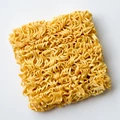
Pasta and noodles are both beloved staple foods around the world, but they have distinct differences in terms of origin, ingredients, preparation, shape, size, cooking time, versatility, nutritional value and taste.
While pasta is a traditional dish of Italian cuisine and is typically made from durum wheat flour and water, noodles are a staple food in many Asian countries and can be made from a variety of grains such as rice, wheat, and even potatoes.
Whether you are a food lover, a chef or just curious about the difference between pasta and noodles, this article will provide you with valuable information that can help you make an informed choice when it comes to preparing and enjoying these classic dishes.
Where in the World are These Delicious Dishes From?
Pasta is a traditional dish of Italian cuisine, originating from the southern regions of Italy such as Sicily and Campania. It has become a staple food throughout the country and is now enjoyed all over the world. On the other hand, noodles are a staple food in many Asian countries such as China, Japan, and Korea. Noodles have been a fundamental part of Asian cuisine for centuries and have been enjoyed by people of all ages. The origins of noodles can be traced back to ancient China, where they were made from wheat, rice and other grains.
The Secret Ingredients Behind Pasta and Noodles
Pasta is typically made from durum wheat flour and water. Durum wheat is a hard wheat variety that is high in gluten, making it perfect for pasta-making. Durum wheat pasta has a yellow color, firm texture, and is able to retain its shape when cooked. In contrast, noodles can be made from a variety of grains such as rice, wheat, and even potatoes. Rice noodles are widely used in Southeast Asian cuisine and are made from rice flour and water. Wheat noodles are commonly found in Chinese and Japanese cuisine and are made from wheat flour and water. Noodles made from potatoes are typically found in Eastern European cuisines and are made by grating potatoes and mixing them with flour.
Cooking up a Storm: Pasta vs Noodles
Pasta is usually boiled and then served with a sauce, such as marinara or Alfredo sauce. The cooking time varies depending on the shape and size of the pasta, with some types taking only a few minutes to cook, while others can take up to 20 minutes. Noodles, on the other hand, are often stir-fried or served in a soup. Stir-frying is a common method of cooking noodles in Chinese cuisine, where they are quickly cooked in a hot wok with oil and various seasonings. In contrast, in Japan, noodles are often served in a broth or dashi, such as in udon or ramen.
Shape, Size and Style: How Pasta and Noodles Measure Up
Pasta come in a wide range of shapes and sizes such as spaghetti, fettuccine, and penne. Spaghetti is long and thin, and is often served with a tomato-based sauce. Fettuccine is flat and wide, and is usually served with a cream-based sauce. Penne is tube-shaped and is versatile, it can be served with a variety of sauces. Noodles, on the other hand, are generally long and thin, like vermicelli or udon. Vermicelli is a type of rice noodle that is thin and translucent, and is often used in Southeast Asian cuisine. Udon is a type of wheat noodle that is thick and chewy, and is commonly found in Japanese cuisine.
Fast and Furious: Cooking Time Comparison
Pasta is typically cooked by boiling, the cooking time of pasta depends on the shape and size of the pasta, but generally ranges from a few minutes to around 12 minutes. Noodles, on the other hand, have a shorter cooking time as they are often stir-fried or served in a soup. This makes noodles a quick and convenient option for a meal, while pasta may require more time and effort to prepare.
Versatility at its Finest: Pasta and Noodles
Pasta can be used in a wide variety of dishes, from classic Italian dishes such as spaghetti Bolognese and lasagna to more modern fusion dishes. It can be served with different types of sauces, meats, vegetables, and cheeses. On the other hand, Noodles are also versatile but are more likely to be used in specific dishes such as lo mein, ramen, and pho, which are traditional dishes of the Asian cuisine.
Nourish your Body: Nutritional Value of Pasta and Noodles
Pasta is generally considered a healthy food, as it is a good source of carbohydrates, which provide energy. Durum wheat pasta is also a good source of protein and B vitamins. Noodles, depending on the ingredients used to make them, can be high in carbohydrates, but they also can be made with rice or other grains, which are gluten-free and low in calories.
Taste and Texture: The Final Showdown
Pasta has a slightly firm texture and a subtle, nutty flavor, while noodles can have a variety of textures, from chewy to soft, and can have a neutral or slightly sweet flavor. Noodles made with rice, for example, have a slightly sweet taste, while wheat-based noodles have a more neutral flavor. Additionally, pasta can be paired with a wide range of flavors and sauces, while noodles are often paired with specific sauces and seasonings that are traditional to the Asian cuisine.













